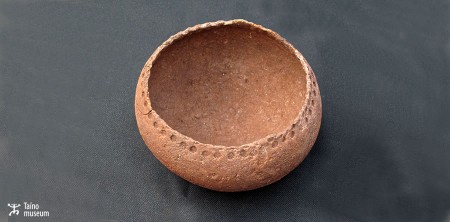This sculptured stone had an oval shape. An anthropomorphic figure was carved in the stone s upper portion and the opposite side was made smooth and convex. This form did not have any indentations by which they might have been hafted or attached to a staff or handle. Its function is unclear. It pertains to…
Read more
Decorated elliptical grinding stone










